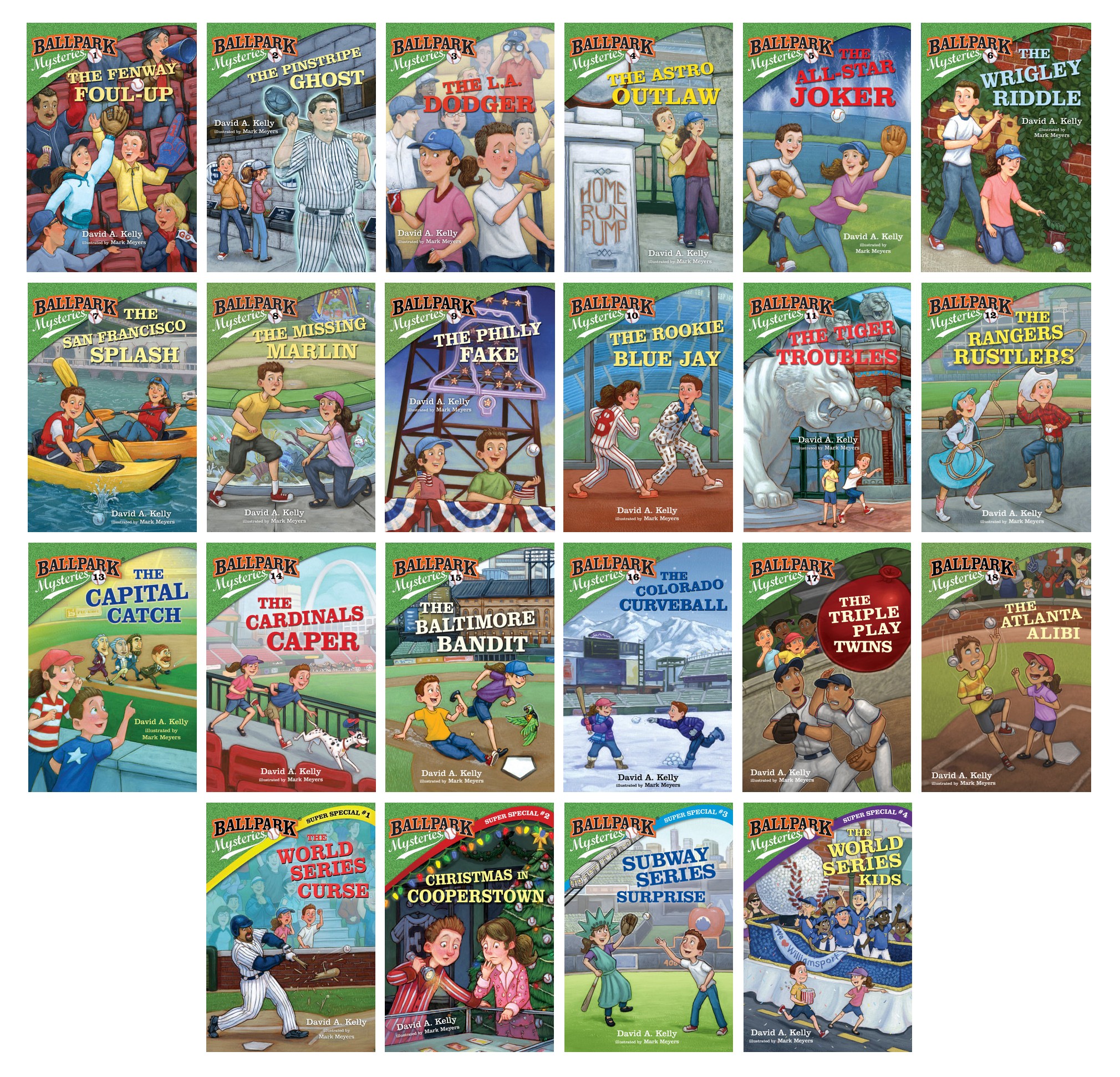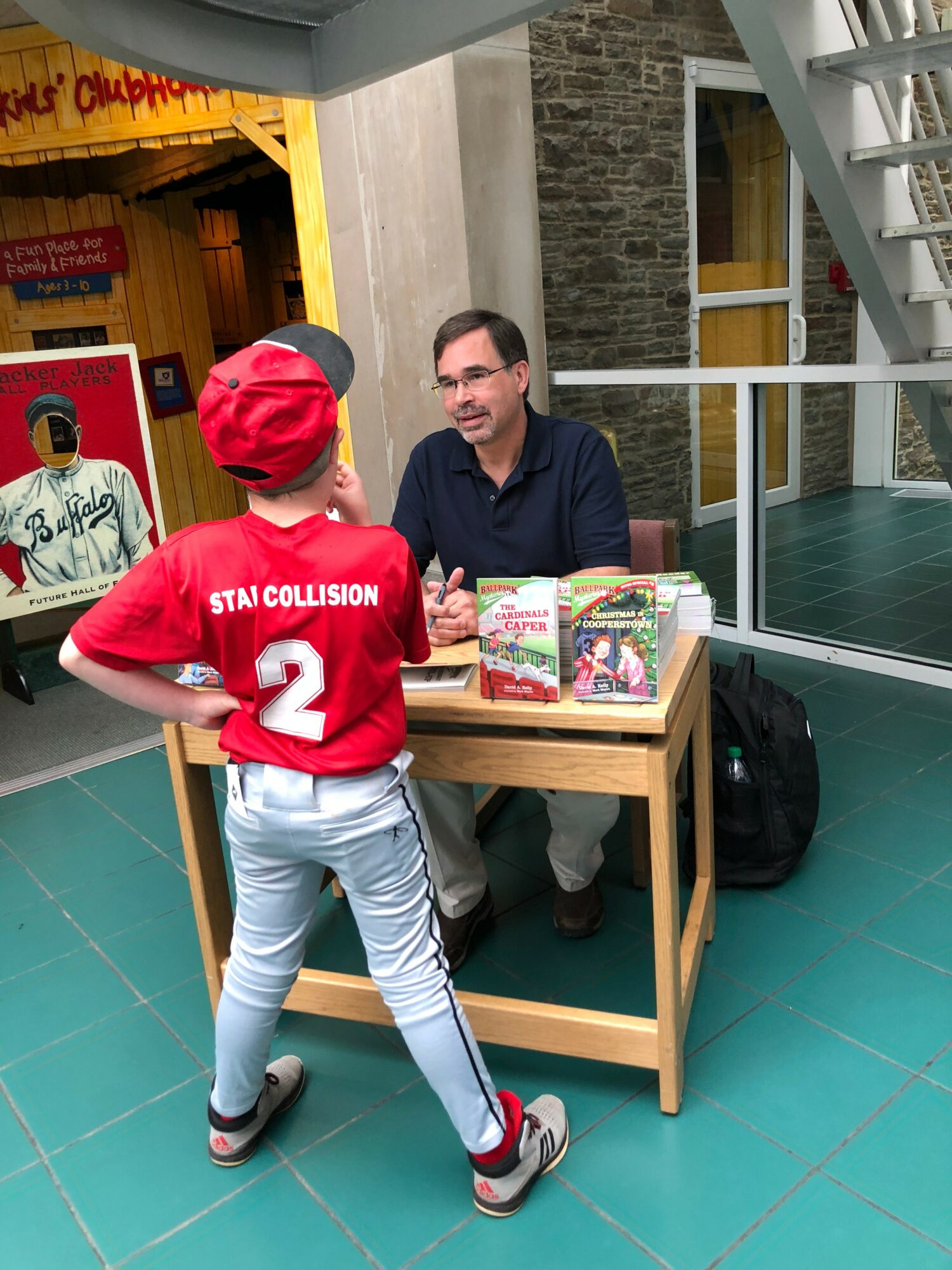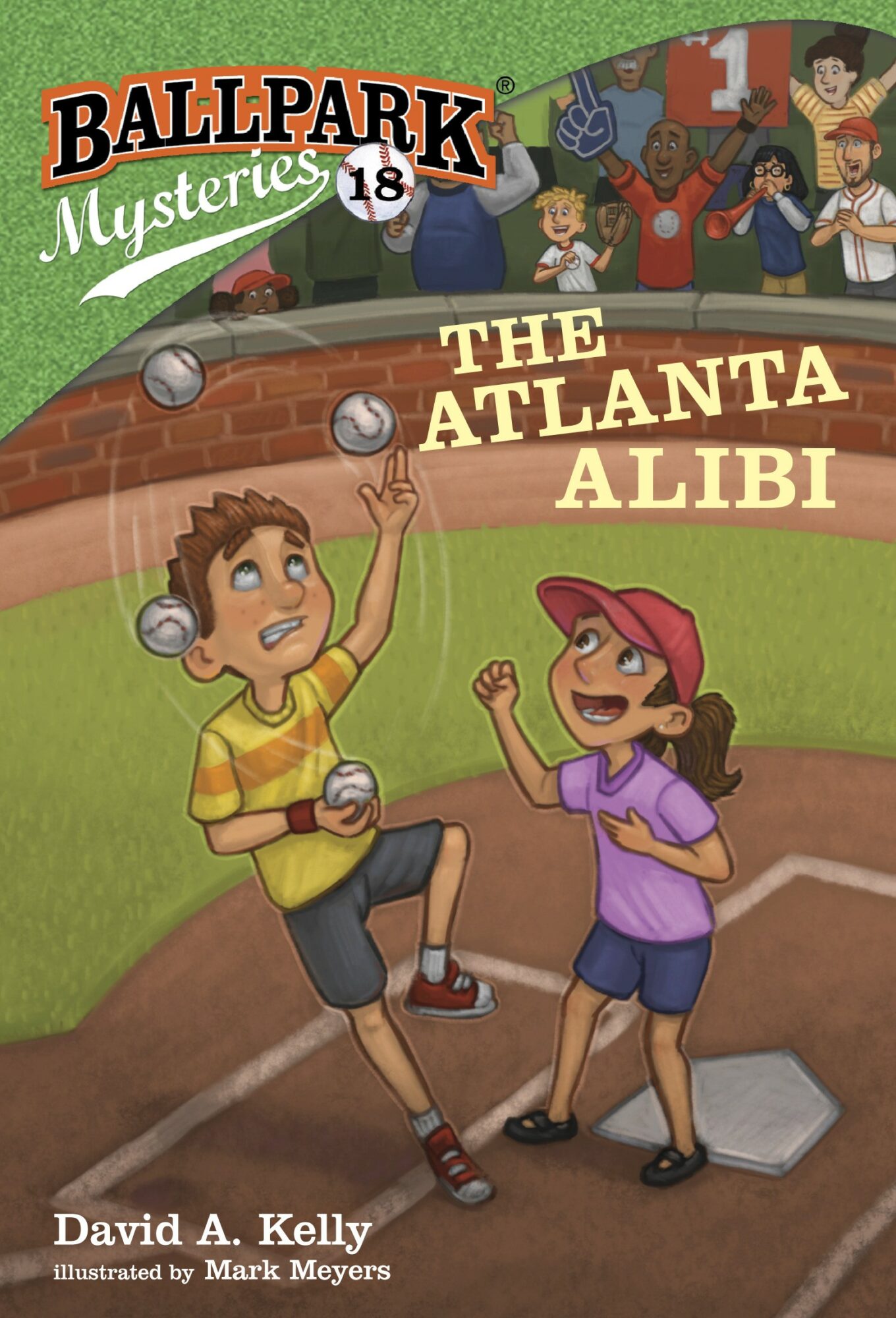

Today we’d like to introduce you to David A. Kelly.
Hi David, so excited to have you on the platform. So before we get into questions about your work-life, maybe you can bring our readers up to speed on your story and how you got to where you are today?
When I started out working in computers and technology after college, little did I expect that I’d eventually be traveling to different major league baseball stadiums to research a best-selling children’s book series (currently comprised of 22 books) of mystery stories set in baseball stadiums!
The Ballpark Mysteries were inspired by my love of reading and the level of excitement my two sons found from playing baseball. When I was younger, I used to love mystery stories—from the Hardy Boys to Encyclopedia Brown. As I was reading books to my boys, the excitement and fun of mysteries came back to me. But my sons, like lots of boys and girls, were more interested in sports and physical activities. It opened my eyes to the power of sports and activities like baseball to fire the imagination of boys and girls.
At the time, I was writing technical and business papers, so the opportunity to explore more creative writing and to focus on baseball and children was a real pleasure. I looked around for children’s books that featured both sports and mysteries but didn’t find many that fit the bill. That’s when I realized that there was something missing in the market—adventure/mysteries that were set in the dozens of really cool cities and ballparks around North America, including Atlanta.
Each Ballpark Mysteries book is set in a different major league ballpark and while it usually involves a baseball game, baseball is more of a backdrop to the action, adventure, and mystery that drives each story forward. The series has sold over 1.5 million copies and is ideal for kids in grades 1 – 5.
The Atlanta Alibi is the newest Ballpark Mysteries book. It’s set at the Atlanta Braves stadium and features a Hank Aaron mystery—his famous bat and ball from home run 715 are stolen from the Braves stadium, and my characters Mike and Kate have to find them. On the way, they visit the birthplace of Martin Luther King, Jr., the parking lot with a wall in the middle of it (where Hank actually hit that home run), and of course, the Braves stadium.
Alright, so let’s dig a little deeper into the story – has it been an easy path overall and if not, what were the challenges you’ve had to overcome?
Even though my Ballpark Mysteries series has 22 books in it and has sold over 1.5 million copies, it hasn’t always been a smooth road to success.
To start with, I wasn’t a great writer. And I never thought I’d become an author. So, once I had the idea for a series of mysteries set in major league baseball stadiums, I had to figure out how to write them. I started by reading a lot of children’s mystery books and trying to copy their format and style. I also took courses in writing children’s books.
Then I sat down to write. It took me close to nine months to write a finished draft of my first book, a Boston Red Sox mystery. I had friends and relatives read it and give me feedback. Then I sent it into an editor at Random House.
A short time later, I received a letter thanking me for the story but highlighting all the problems with the manuscript—it wasn’t written well, the characters weren’t developed, the mystery was too slow, and the sentences were too long. In short, it was unpublishable.
Luckily, the editor agreed to review a revised manuscript. So, I revised. Four months later, I had an updated version to send.
Unfortunately, the feedback was the same. There some definite improvements, but overall, the work wasn’t publishable.
I sat down a third time, throwing out all that I had written, and started over with a new idea for a Boston Red Sox mystery. A few months later, I had a new draft and submitted it.
It worked! Finally, the editor was interested in possibly publishing the book. More work was required, of course. I had to rewrite the middle of the book, but with that additional work, the editor bought the manuscript.
I think that anyone can learn to become a writer as long as they’re willing to be persistent.
Thanks – so what else should our readers know about your work and what you’re currently focused on?
I am particularly proud of how my Ballpark Mysteries books mix mysteries with non-fiction information from real places and real teams.
In fact, my process of writing a mystery is very much a mystery! When I start writing, I often don’t know what the mystery will be or how it will be solved. I usually start with a list of all the interesting and unique things I can think of relating to the ballpark, the team, the team’s history, and the city. I identify a few key things that I feel are important or might work well for a mystery, along with a few key locations (such as the ballpark and any important landmarks or locations). Then I try to think of different mysteries that might use those locations or attributes that I’ve identified.
For example, in The Colorado Curveball, I knew that the Rockies’ humidor for baseballs was going to be an important aspect of the mystery. What I didn’t know until I visited the ballpark and city was that dinosaurs would also play an important role in the mystery since there are lots of dinosaur-related connections to Colorado and the Rockies team, like the mascot.
Just as important to the mystery is the non-fiction information and real-life settings. Including non-fiction resources in a “Dugout Notes” chapter at the end of each Ballpark Mysteries book was important to me. I love facts and information and history, and I know my sons did also, so when I started the Ballpark Mysteries, I thought it would be fun to include some history and background information about the teams, stadiums, and cities featured in the books.
Is there any advice you’d like to share with our readers who might just be starting out?
Overall, creating a successful children’s book series has been a fair amount of work, but it’s really fun to be working on something creative. In one sense, writing a children’s book turned out to be the easy part. Getting a children’s book published is a bit harder. It takes dedication, some good writing, and lots of patience and persistence. It’s not something that happened quickly for me, but with luck and persistence, it did.
My advice to aspiring authors is to always continue to look for ways to learn. Learn about the market, learn how to understand different levels and reading requirements, learn how to develop a creative social network that can help nurture you, learn how to revise, revise, revise, and learn how adjust your goals and expectations to what’s possible.
Pricing:
- $5.99 (each Ballpark Mysteries book)
Contact Info:
- Email: mike@ballparkmyteries.com
- Website: www.davidakellybooks.com
- Instagram: https://www.instagram.com/davidakellybooks/
- Facebook: https://www.facebook.com/ballparkmysteries/
- Twitter: https://twitter.com/DavidaKelly
- Youtube: https://www.youtube.com/channel/UC1F0pFhl5lX3yAnOXhHdc3w



 Image Credits
Image Credits
David A. Kelly













